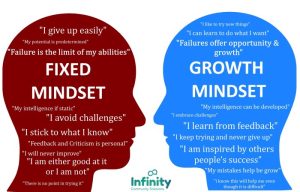Mental Health Awareness in Schools
Mental health awareness in schools is paramount. Students face unique pressures impacting their well-being, from academic stress to social anxieties. Understanding these challenges, providing effective support systems, and fostering a culture of open communication are crucial for creating a thriving learning environment where every student can reach their full potential. This exploration delves into the multifaceted aspects of promoting mental health within the educational setting, examining current practices, effective interventions, and strategies for building resilience and fostering a supportive community.
This involves addressing the prevalence of mental health issues like anxiety and depression, implementing stress management techniques, and providing access to appropriate resources and support services. Furthermore, it necessitates a collaborative effort involving students, teachers, parents, and administrators to create a school environment that prioritizes mental well-being and reduces the stigma associated with seeking help.
Personal Growth and Self-Care Strategies for Students: Mental Health Awareness In Schools
Maintaining good mental health is crucial for academic success and overall well-being. Self-care, the conscious practice of engaging in activities that promote physical, mental, and emotional health, plays a vital role in this process. By prioritizing self-care, students can build resilience, manage stress effectively, and improve their overall quality of life.Self-care strategies are not a one-size-fits-all approach; rather, they are personalized practices tailored to individual needs and preferences.
The effectiveness of self-care hinges on its consistency and integration into daily routines. Regular self-care can prevent burnout, enhance focus, and foster a greater sense of self-awareness and control.
Self-Care Strategies for Students
Effective self-care involves a multifaceted approach encompassing physical, mental, and emotional well-being. Students can incorporate various strategies into their daily lives, depending on their individual needs and preferences. These practices can range from simple mindfulness exercises to engaging in hobbies and spending time in nature.
Examples of Self-Care Activities for Students, Mental health awareness in schools
The types of self-care activities that resonate with students vary widely depending on age and interests. Younger students might benefit from engaging in creative activities like drawing or playing, while older students might find solace in listening to music, reading, or practicing yoga. Examples include:
- Younger Students (Elementary): Creative activities (drawing, painting, playing), spending time outdoors, reading age-appropriate books, engaging in physical play.
- Middle School Students: Listening to music, engaging in team sports or individual hobbies (e.g., playing a musical instrument, writing), spending time with friends and family, practicing mindfulness techniques.
- High School Students: Exercising regularly, pursuing creative outlets (e.g., photography, writing, coding), engaging in social activities, practicing mindfulness or meditation, seeking support from trusted adults.
It’s important to remember that self-care is not selfish; it’s essential for maintaining a healthy balance and preventing burnout. Students should experiment with different activities to find what works best for them and make self-care a regular part of their routine.
Self-Care Resources and Apps
Numerous resources and apps are available to support students in their self-care journey. These tools can provide guidance, support, and practical strategies for managing stress and improving mental well-being. The following table lists some examples:
| Resource Type | Examples | Description |
|---|---|---|
| Apps | Headspace, Calm, Mindshift CBT | Offer guided meditations, mindfulness exercises, and cognitive behavioral therapy (CBT) techniques. |
| Websites | The Jed Foundation, The Trevor Project, Child Mind Institute | Provide information, resources, and support for mental health issues affecting young people. |
| Books | “Mindfulness for Beginners” by Jon Kabat-Zinn, “The Happiness Trap” by Russ Harris | Offer practical guidance on mindfulness, CBT, and other self-help techniques. |
Ultimately, fostering mental health awareness in schools requires a comprehensive, multifaceted approach. By implementing effective strategies for stress reduction, providing accessible mental health resources, and promoting a culture of support and understanding, we can empower students to thrive academically, socially, and emotionally. A commitment to prioritizing mental well-being is not merely beneficial; it is essential for creating a healthy and successful future for all students.
FAQ Corner
What are the early warning signs of mental health issues in students?
Changes in behavior, academic performance, social interactions, sleep patterns, and appetite can be early warning signs. Increased irritability, withdrawal, anxiety, or persistent sadness should also be taken seriously.
How can parents support their child’s mental health at school?
Open communication, active listening, and seeking professional help when needed are crucial. Parents can also work with school staff to ensure their child has the necessary support and resources.
What role do teachers play in promoting student mental health?
Teachers can create a supportive classroom environment, identify students who may be struggling, and collaborate with school counselors and administrators to provide appropriate support.
Are there any privacy concerns regarding student mental health information?
Yes, strict confidentiality guidelines protect student privacy. School staff are bound by professional ethics and legal regulations regarding the handling of sensitive information.




